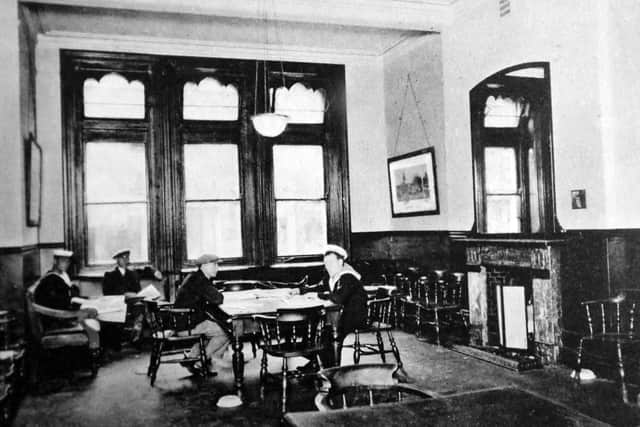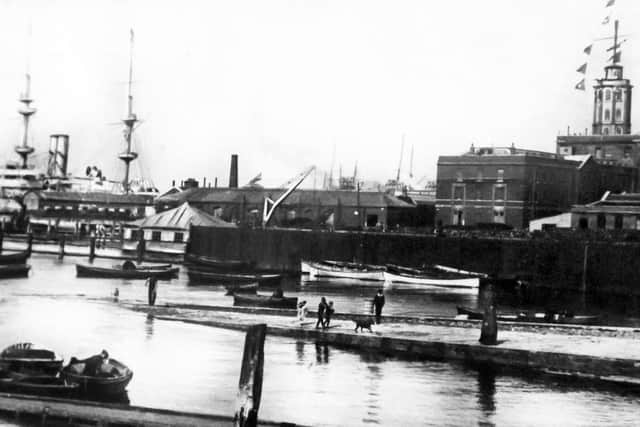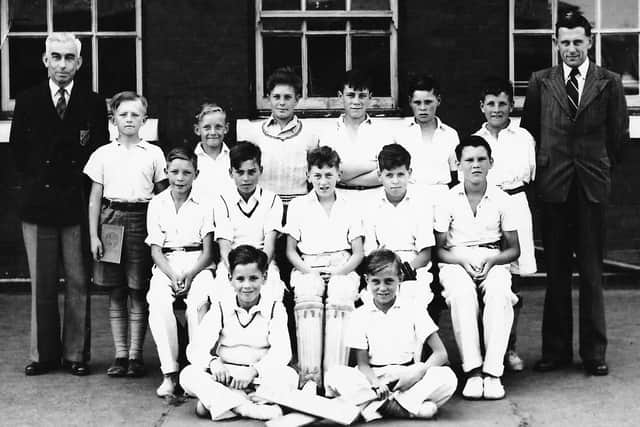Cannonballs, royal yachts and boys in their cricket whites – Nostalgia


The picture, above, must have been taken in the 1880s and shows a mound of cannonballs stacked in Grand Parade, Old Portsmouth.
There is a cross, just out of sight, which is a memorial to the 8th (The King’s) Liverpool Regiment of Foot. It remembers the officers and men of the regiment who died while suppressing the Great Sepoy Mutiny between 1857 and 1858.
Advertisement
Hide AdAdvertisement
Hide AdIt has since been moved to Liverpool. To the right of that is a sundial.


Judging by the size of the cannonballs I would think they were 25-pounders and would have been fired from Spur Redoubt.
Most of us will immediately recognise the scene, below, taken from The Hard looking across the mudflats to the South Railway Jetty.
The view has been blocked by HMS Warrior 1860 since 1987.
To the right is the old semaphore tower destroyed in the fire of 1912 and rebuilt and opened in 1930.


Advertisement
Hide AdAdvertisement
Hide AdThe ship at the jetty, once called Farewell Jetty, is HMS Renown – in service from 1897 to 1913. She was nicknamed The Battleship Yacht.
As cruiser speeds increased she had her secondary armament of 6in guns removed and she became a royal yacht when she took the Duke and Duchess of Connaught on a royal tour of India from November 1902 to March 1903.
Three years later after more of her gunnery was removed and after departing Portsmouth on October 8, 1905 for Genoa, the Prince of Wales, the future King George V and Queen Mary, embarked on a royal tour of India. The photo may be when the Renown was waiting to depart Portsmouth for this voyage.
It was sold for scrap in 1914.


The Trafalgar Club was called the Traf Club in Edinburgh Road by generations of sailors. It was originally called the Trafalgar Institute and offered a decent bed and a meal to sailors who had no means of getting home when on weekend leave, or had no home to go to.
Advertisement
Hide AdAdvertisement
Hide AdIt offered clean and hospitable quarters and in the photograph, below, we are looking out over Edinburgh Road with the Empire Theatre opposite.
Mrs Rosemary Jerrard sent me a letter from Budleigh Salterton, Devon, to tell me her husband Ron died last August.
On going through his belongings she came across several photographs of Ron when he was at school. Some are from Wimborne Road Junior School, Southsea, and later ones are Copnor Modern which he left in 1956.
Unfortunately, no names were attached to the photographs – are you among the boys below.